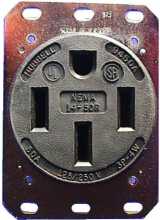Yes, I think that Tesla has likely built their own devices like that to let you grab both phases from different outlets in different parts of the building. The problem is a typical 120v circuit still only has maybe a 15 or 20amp breaker/fuse so you still aren't all the way there.
If the 70amp@220v takes 3.5 hours to full charge,
and a "level 2" 32amp@240v takes 8+ hours, then the
"two into 1" <15amp@240v would take around 16 hours to fully charge a roadster.
It still beats the ~30+ hours you would need with a conventional 120VAC outlet, but is still a bit on the slow side compared to a real "dryer/range/welder/RV" outlet with a higher amperage breaker.






